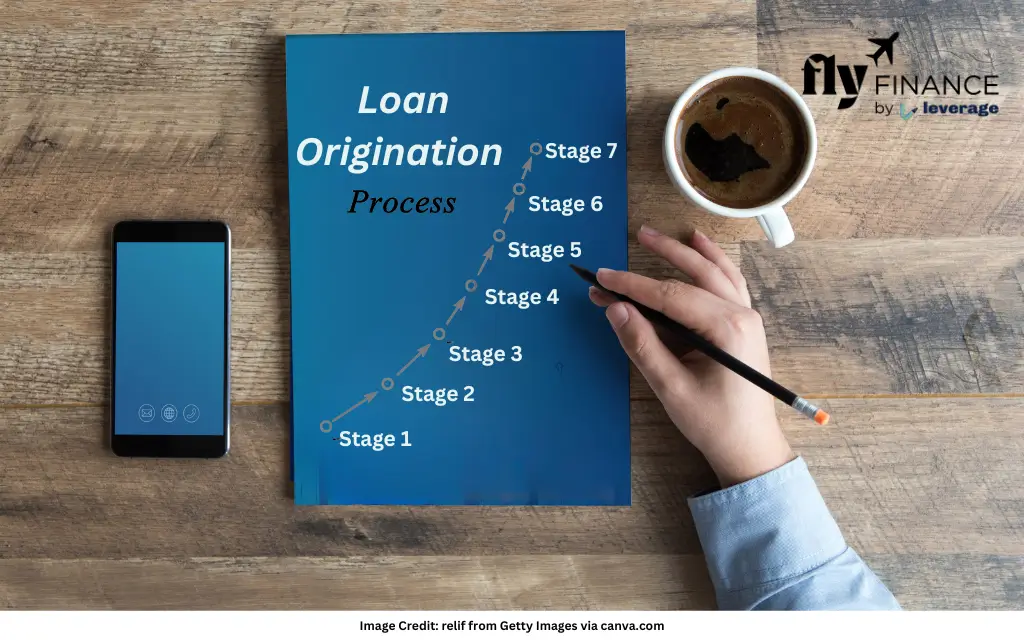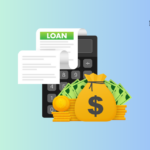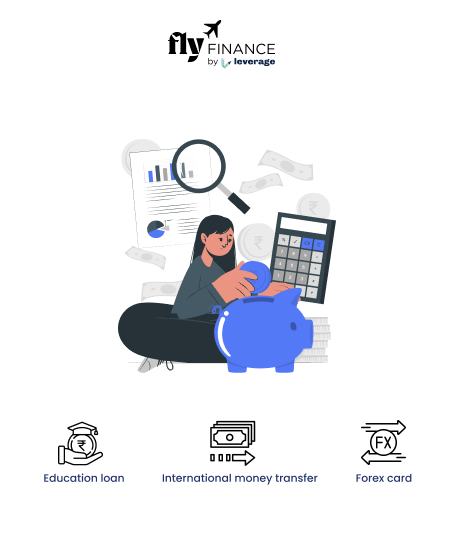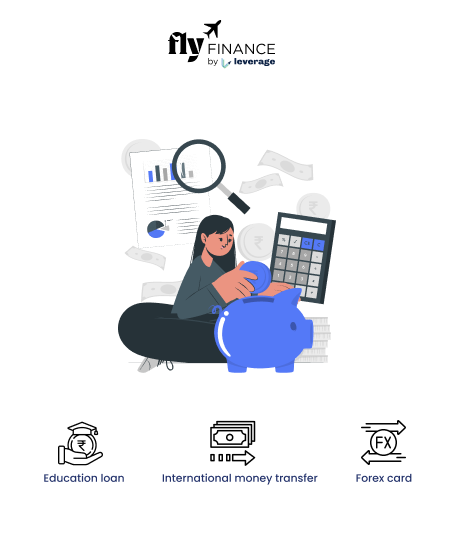The loan origination process is a critical pathway for borrowers seeking financial support and lenders evaluating applications. Whether you’re a student applying for an education loan or a business owner seeking capital, understanding this process ensures a smoother experience.
This guide explores the loan origination process, its stages, benefits of automation, and tips to optimize your application, fully aligned with the latest updates.
Table of contents
What is Loan Origination Process?
Loan origination process is the end-to-end journey from a borrower submitting a loan application to the lender approving or denying it and disbursing funds. This personal or education loan process involves multiple stages, including application submission, documentation, credit evaluation, underwriting, and loan funding. For financial institutions, loan origination is a specialized form of account opening, tailored to assess borrower eligibility and mitigate lending risks.
For students, the loan origination process is particularly relevant for securing education loans to cover tuition, accommodation, or other academic expenses. By understanding each step, borrowers can prepare accurate documentation and improve their chances of approval.
Why is Loan Origination Important?
Loan origination determines critical loan terms, such as education loan interest rate, repayment schedules, and eligibility criteria. It serves as the foundation for securing financial assistance for personal, educational, or business purposes. According to a 2024 report by the Consumer Financial Protection Bureau, streamlined loan origination processes have reduced approval times by up to 30% for digital lenders, enhancing borrower satisfaction.
Also Read: Reasons to Choose Fly Finance for Study Abroad Education Loan
What is the Loan Cycle?
A loan cycle is the period of time between when a borrower initially applies for a mortgage and when it is eventually repaid to the lender, plus interest. There are six stages in a typical loan cycle. These are:
- Pre-loan calculations: A set of calculations must be finished before the borrower can begin the loan application procedure.
- Research: As the market for electronic lending has grown, borrowers now have full access to detailed information about a variety of financial product lines.
- Application: Although this step seems simple, giving incorrect information on important papers could cause your loan request to be delayed significantly.
Key Stages of the Loan Origination Process
The loan origination process consists of seven distinct stages, including application, documentation, verification, credit assessment, approval, and disbursement. Each stage involves rigorous checks to ensure the borrower meets the lender’s requirements and that the loan complies with regulatory standards.
Here are the loan origination process steps which you need to follow in sequence:
- Stage 1: Pre-qualification
- Stage 2: Loan Application
- Stage 3: Application Processing
- Stage 4: Underwriting Process
- Stage 5: Credit Decision
- Stage 6: Quality Check
- Stage 7: Loan Funding
Explanation of Stages of All Loan Origination Process
Stage 1: Pre-qualification
The Loan Origination Process begins with this. The prospective borrower will now be given a list of the things they must present to the lender in order to be approved for a loan. This might comprise
- Voter identification, an AADHAR card, or a PAN card that serves as a confirmation of identity or address.
- Information about current employment, including a pay stub, credit history, bank statement, and previous loan statements
When the lending firm receives this information, the lender evaluates the paperwork and issues a pre-approval, enabling the borrower to proceed with the loan application procedure.
Stage 2: Loan Application
This comes after the first stage of the loan origination process. The borrower completes the loan application during this phase. This application may occasionally be sent on paper, however, today’s lenders are moving towards an electronic form, making this stage Paperless. With the help of new technology, applications may now be submitted online or through mobile apps, and the data gathered can be tailored to particular loan products.
Stage 3: Application Processing
Processing describes the administrative tasks necessary to get a loan application ready for an underwriter to go at. Information about the borrower, such as their credit history, income, assets, and liabilities, must be gathered and verified as part of this process. It also entails putting together any required paperwork, including pay stubs, tax returns, and evidence of insurance. Prior to sending the application to the underwriter for examination, the processor is in charge of making sure that all necessary data and paperwork are exact and comprehensive.
Stage 4: Underwriting Process
The borrower’s creditworthiness, income, assets, and liabilities are all examined during this phase, along with the collateral that will be used to secure the loan. As necessary, the underwriter may also ask for more information or evidence after verifying the information supplied in the loan application. The purpose of underwriting is to establish loan terms and conditions that will reduce the risk of default and assess the likelihood that the borrower will be able to repay the loan.
Stage 5: Credit Decision
An application may be accepted, rejected, or returned to the originator for more information depending on the outcomes of the underwriting process. An automated adjustment in the parameters, such as a smaller loan amount or different interest rates, may occur if specific criteria, as determined by the rule engine built into the system, do not match.
Stage 6: Quality Check
The quality check phase of the loan origination process is crucial for lenders because lending is heavily regulated. The quality control team receives the application and reviews key factors in comparison to internal and external laws and regulations. The application is being reviewed for the last time before financing.
Stage 7: Loan Funding
After the loan agreements are completed, the majority of loans finance quickly. Loans against property, business loans, second mortgage loans, and lines of credit could need more time due to regulatory and legal requirements. LOS can monitor funds and make sure that the appropriate papers are signed prior to or concurrently with funding. Visit AutoCloud- Loan Origination System to see how it may improve customer service and enable loan approval times of under five minutes for your clients.
Also Read: How to Apply for an Unsecured Education Loan
Loan Origination Automation and its Benefits
By integrating various systems, providing dependable and consistent data throughout the loan origination process and accelerating the entire process, Loan Origination Automation can help to address these difficulties. At different stages of the loan origination process, including the gathering and verification of borrower information, underwriting, approval, and loan closure, automation may be used.
Loan Origination Systems (LOS) use algorithms to evaluate credit scores and provide instant decisions.
Benefits of Loan Origination Automation
There are several benefits of the loan origination process, following are listed below:
- Increased Efficiency: Automation reduces processing times by up to 40%.
- Improved Accuracy: Algorithms minimize human errors in credit evaluations.
- Cost Reduction: Lenders save on operational costs, passing benefits to borrowers through lower fees.
- Enhanced Customer Experience: Faster approvals and transparent tracking improve satisfaction.
- Better Compliance: Automated systems ensure adherence to regulatory standards.
- Scalability: LOS handles high application volumes without compromising quality.
Loan Origination vs. Loan Underwriting
Loan origination encompasses the entire process of securing a loan, while underwriting is a specific stage focused on risk assessment. For students, origination involves submitting applications and documents, whereas underwriting determines loan approval based on creditworthiness and financial stability.
The table below outlines the differences between the loan origination process and the Loan underwriting process in terms of definition, key activities, and purpose:
| Aspect | Loan Origination | Loan Underwriting |
|---|---|---|
| Definition | Full process from application to funding | Risk assessment stage within origination |
| Key Activities | Application, documentation, funding | Credit evaluation, collateral assessment |
| Purpose | Secure loan for borrower | Determine loan approval and terms |
Tips to Speed Up the Loan Origination Process
To expedite loan approval, borrowers can follow these actionable steps:
- Prepare Complete Documentation: Submit accurate proof of identity, income, and other required documents upfront.
- Check Credit Score: A higher credit score (e.g., 700+) improves approval chances.
- Use Digital Platforms: Apply through online portals for faster processing.
- Communicate Promptly: Respond to lender queries to avoid delays.
- Track Application Status: Use lender apps or portals to monitor progress.
Also Read: What is Student Loan Floating Interest Rate?
The loan origination process is a structured journey that ensures borrowers secure funding while lenders mitigate risks. By understanding its stages—pre-qualification, application, underwriting, and more—borrowers can navigate the system effectively. Automation through Loan Origination Systems further enhances efficiency, making the process faster and more reliable. Whether you’re a student or a business owner, preparing accurate documentation and leveraging digital tools can significantly streamline your loan application.
FAQs on Loan Origination
The loan origination process involves a borrower applying for a loan, followed by lender evaluation through stages like application, processing, underwriting, and funding.
Loan origination refers to the end-to-end process where a borrower applies for a loan, and a lender evaluates, processes, and either approves or denies the application. Specifically, for mortgage loans, origination covers all steps from receiving the application to disbursing funds or rejecting the request. This process includes key stages like application submission, documentation, underwriting, and funding. In the broader financial context, loan origination is a specialized form of opening a new account, commonly used by mortgage lenders and other financial service providers.
In the loan underwriting process, the lender assesses the borrower’s creditworthiness and decides whether to approve or deny financing to the borrower. The use of efficient loan origination software simplifies this phase for loan underwriters greatly.
Loan origination is essential as it determines the terms and conditions of the loan, such as interest rates, repayment periods, and eligibility. It is the starting point of securing financial support for personal, educational, or business needs.
Common documents required for loan origination process are proof of identity, proof of income, bank statements, address verification, and, for education loans, documents like admission letters, fee structures, and co-borrower details.
Yes, lenders typically charge loan origination fees, which are usually a percentage of the loan amount. These fees can vary depending on the lender and the type of loan being offered.
Yes, many lenders offer online portals or mobile apps where borrowers can track the status of their loan application, check if additional documents are needed, and receive updates on approval.
To speed up the process, ensure that all documentation is accurate and complete, submit the required documents promptly, and communicate with the lender to clarify any queries. Staying organized and responsive will help minimize delays.
The loan origination process involves seven key steps to evaluate and approve a borrower’s application:
Pre-qualification: Borrowers provide initial financial and personal information (e.g., proof of identity, income_methinks income, credit history) for a preliminary eligibility check.
Loan Application: Borrowers submit a formal application, often digitally, detailing their financial needs and loan purpose.
Application Processing: Lenders verify borrower information, including income, assets, and liabilities, ensuring all documents are complete.
Underwriting Process: Lenders assess the borrower’s creditworthiness and collateral to determine loan terms and risk.
Credit Decision: The lender approves, denies, or adjusts the loan based on underwriting results.
Quality Check: The application is reviewed for compliance with internal and external regulations.
Loan Funding: Approved funds are disbursed, typically within 24–48 hours for personal loans, with additional time for complex loans like mortgages.
The loan process, often synonymous with the loan origination process, includes the following steps:
Pre-loan Calculations: Borrowers assess their financial needs and repayment capacity.
Research: Borrowers compare lenders, loan products, and interest rates.
Application: Borrowers submit a loan application with required documents.
Processing: Lenders verify and organize borrower data for underwriting.
Underwriting: Lenders evaluate the borrower’s ability to repay and set loan terms.
Approval/Denial: The lender decides to approve, deny, or modify the loan.
Funding: Approved loans are funded, and funds are disbursed to the borrower.
To originate loans effectively as a borrower, follow these steps:
Prepare Documentation: Gather proof of identity (e.g., Aadhaar, PAN card), income (e.g., salary slips), bank statements, and other required documents.
Check Credit Score: Ensure a strong credit score (700+ recommended) to improve approval odds.
Research Lenders: Compare loan products, interest rates, and fees from multiple lenders.
Submit Application: Use online portals or mobile apps for faster, paperless submission.
Respond Promptly: Address lender queries or requests for additional documents quickly.
Track Progress: Monitor application status via lender portals to stay informed.
Leverage Automation: Choose lenders with Loan Origination Systems (LOS) for faster processing.
The debt origination process is another term for the loan origination process, where a borrower applies for a loan (a form of debt) and a lender evaluates and approves it. It involves pre-qualification, application submission, processing, underwriting, credit decision, quality checks, and funding. This process ensures that the borrower’s debt is structured with appropriate terms, such as interest rates and repayment schedules, while minimizing lender risk.
This is all about loan origination process steps For any Student Loan, Bank Account or Money related queries, contact Fly Finance Team.





























